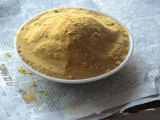Ferric Sulfate 11% Suppliers, Ferric Sulfate 11% Manufacturers.

Polymeric Ferric Sulfate
Polymeric Ferric Sulfate Features
1. High efficiency. Its Water purification effect is better than that of other agents because it belongs to polymer and has strong adsorbability,
2. Speediness. Big flocculant body formed after PFS dosing so that it settles quickly, has good hydrophobicity and is easy to filter.
3. Well-adapted. Adapt to various waste water with its ph value between 4-11 well. It will have remarkable purification effect no matter how turbid or how dense of the waste water.
4. Less dosage. It will save cost with its convenient operation and small dosage.
5. Self-indication. It will be noticed if dosing excessively through its red color in itself so as to save cost.
Polymeric Ferric Sulfate Application
1. Polymeric Ferric Sulfate can replace other inorganic flocculants comprehensively. Use for industries wastewater treatment of printing & dyeing, paper making, electroplating, circuit board, food processing, pharmacy, fertilizer, pesticide etc.
2. Polymeric Ferric Sulfate is suitable for phosphorus removal of life sewage wastewater treatment plant or improving the hydrophobicity of sludge.
3. It can replace the use of aluminum salt. It can be used to remove the residual aluminium pollution of tap water during its treatment.
4. Used to sludge press mud. It will have excellent effect with used with few of polyacrylamide
Quality Specification
Executive Standard GB14591-2006
Item | Index | |
Solid | Liquid | |
Appearance | yellow or bronzing solid | bronzing viscous liquid |
Density (g/cm3,20°C) |
| ≥1.45 |
Entire iron (mass fraction,%) | ≥20 | ≥11 |
reducing material ( count by Fe,%) | ≤0.15 | ≤0.15 |
Basicity,% | 8-16 | 8-16 |
water insoluble (%) | ≤0.5 | ≤0.3 |
Ph value (1% water solution) | 2-3 | 2-3 |
Usage & Caution
Users shall determine the suitability of SPFS for the raw water to be treated by sample test prior to use.
1. Preparation of SPFS working solution: dissolve SPFS in water at the concentration of 10-30% (W/W), stir until it is completely hydrolyzed. Dilute the result red brown liquid to required concentration, usually 2-5% for tap water and 5-10% for industrial waste water.
2. Dosage: Dosage can be determined according to the formation and settling of flocs by sample test. For treatment of tap water under identical condition, the dosage of SPFS is equivalent to polyaluminum chloride, or 1/3-1/4 of that of aluminum Sulphate.
3. Pump calculated amount of the above SPFS working solution into gauge tank, and add into the raw water to be treated.
4. Generally the SPFS working solution shall be used right after preparation. Use pure tap water for preparation. Sometimes slight precipitation may occur depending on the water used.
5. Keep close attention to the progress of the application which may be divided into three stages:
(1)Coagulation: Large amount of micro flocs formed in a very short time after the SPFS working solution is mixed with raw water. The water turns more turbid. Vigorous stirring is needed at this stage, usually 250-300r/min in sample test for 10-30S¡ê?at the maximum not exceeding 2min.
(2)Flocculation: The micro flocs grows to form large ones. Mild stirring at first and then standing for 10-15min is required at this stage. In the sample test, stir at 150r/min for 6 min, then 60r/min for 4 min.
(3)Sedimentation: water flow shall be very slow at this stage for floc settling. To achieve high efficiency, lamella settling or flotation method can be used. In the sample test, stir at 20-30r/min for 5 min, stand for 10 min, and test turbidity.
6. Compulsive filtration: choose suitable filter material or filter aid to achieve good capture effect and filtration speed. This is a key step for improvement of water quality.
7. SPFS is also available for treatment of industrial waste water with similar application procedures. It is very effective for high-colority, high COD/BOD water, particularly when co-used with other auxiliaries.
8. For users adopting chemical flocculation, no further equipment is needed saving the vessel for preparation of SPFS working solution.
9. SPFS shall be kept in dry places and away from heat (< 80oC). It is stable for prolonged storage.
10. SPFS can only be used after dissolution. The vessels and pipes used shall be made with corrosion resistant material.
Package
Plastic woven bag with PE liner. n.w. 25kg.
Advantage: ( with PFS)
1). Stronger decolorization and COD removal rate
2). Faster sedimentation,better flocculation
3). Non-pollution(no aluminum, chlorine, heavy metal ions ect.)


Company: |
Taian Health Chemical Co., Ltd. |
E-mail: |
chem@netsun.com |
Address: |
Chemical industry park, No.96 Great Wall Road, Tai'an city, Shandong Province, China |
Zip Code: |
271000 |